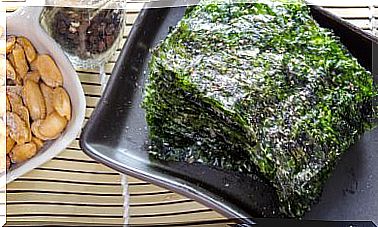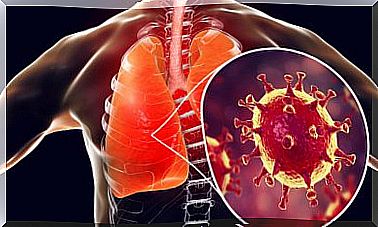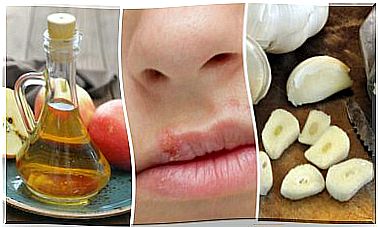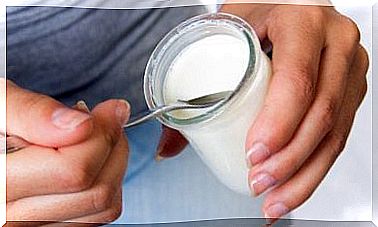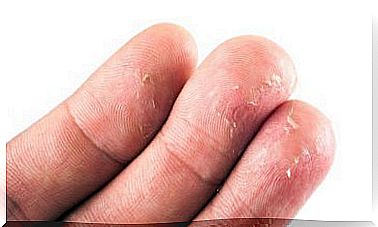Nutritional Treatment In Type 2 Diabetes
Nutritional treatment plays an important role in the management of type 2 diabetes. Although there are many factors that affect the development of this disease, a good diet is essential to control it and avoid related complications. What should you know about it?
What is type 2 diabetes?
Diabetes mellitus is a chronic metabolic disorder that manifests itself with glucose levels higher than those recommended in the blood. In the specific case of type 2 diabetes, the body stops using insulin correctly. The latter is a hormone produced by the pancreas whose function is to help glucose enter cells and be used for energy.
Among the risk factors for developing this pathology are: having a family history of diabetes mellitus, age, suffering from obesity and physical inactivity. In fact, it ‘s common for people with type 2 diabetes to also be overweight or obese.
In these patients, reducing energy in the diet, while maintaining an adequate and healthy supply of nutrients in meals, is beneficial to promote weight loss. Losing weight could translate into benefits in both glycemic control and blood pressure.
Nutritional treatment in type 2 diabetes
Since there is no ideal pattern for all patients, nor a percentage of macronutrients that can be used in a general way, according to current evidence, the most recommended treatment would be a joint diet and physical activity plan prescribed by a professional. This is stated by an investigation published in the journal BMJ.
According to the latest consensus of the American Diabetes Association (ADA), the goals of nutritional treatment should be the following:
- Improve glycated hemoglobin parameters, reduce hypertension and cholesterol levels.
- Achieve and maintain a healthy weight (at this point the adherence and change of habits of the patient is of special interest).
- Prevent complications.
Therefore, one of the points that must be taken into account, once the disease is diagnosed, is the dietary factor.
Carbohydrates
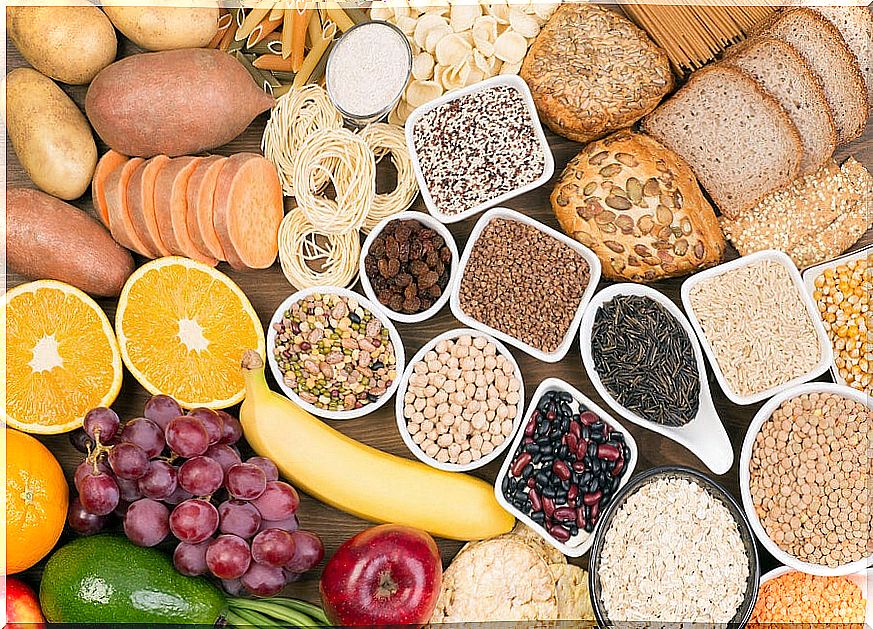
Fruits, vegetables, vegetables, legumes and whole grain cereals. These foods should be the main source of carbohydrates in any healthy diet, but especially for these patients. Being made up in part of fiber, their entry into the bloodstream is slower and there are no spikes in blood glucose.
In addition, they increase the feeling of satiety, which helps with weight control. According to research published in the journal Nutrients, fiber consumption appears to have a beneficial effect on serum cholesterol levels and other causes of cardiovascular risk such as hypertension.
Therefore, a consumption of approximately 26 grams per day in women and 28 grams per day in men is also recommended in people with type 2 diabetes.
It is not what happens with foods rich in simple carbohydrates, where we would find pastries, sweets, fruit juices, etc. These foods are devoid of fiber and therefore their impact on blood glucose is greater.
The consumption of whole grain cereals (cereals that preserve their three parts, germ, bran and endosperm, also called whole grains) has been studied and, although there is insufficient evidence to justify better glycemic control with their consumption, it has been related to a decrease in systemic inflammation and mortality.
Non-caloric sweeteners
Although studies affirm that non-caloric sweeteners such as saccharin or stevia do not alter glycemic function, many of the foods that contain them could alter it due to the ingredients used in the preparation of the product.
Used as sugar substitutes it can be beneficial to reduce the consumption of sucrose or “table sugar”, although more studies are needed to confirm this.
Other foods
As for the rest of foods, the recommendations would be the same as for the general population. In the case of proteins, they must also be individualized, but the recommendations are as for other people. In fact, the intake of proteins of high biological value could be related to an improvement in the response to insulin, without increasing the plasma glucose level.
In the case of fat, the same as in the case of proteins; the evidence suggests that the quantity is not so important but the quality of these. You should increase the consumption of good quality fats (seeds, avocados, fatty fish, etc.) and decrease those of poorer quality, existing in processed meats and precooked foods, among others.
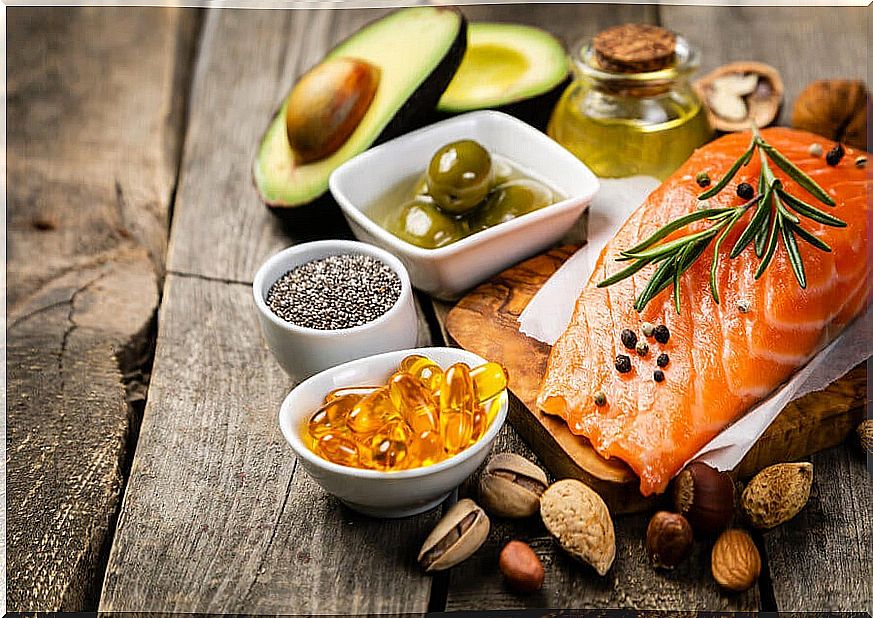
Other recommendations for the nutritional management of type 2 diabetes include:
- Choose healthy dishes in which carbohydrates are low in the glycemic index.
- Control foods rich in trans and saturated fats due to their relationship with increased dyslipidemia.
- In the case of fish, especially oily fish, its recommendation is the same as that of people without diabetes. Due to its content of omega 3 fatty acids, it is recommended to eat fatty fish at least twice a week.
- To reduce the risk of dyslipidemia, it is also advisable to eat foods rich in sterols (usually enriched), always within a healthy diet.
- The moderate consumption of dairy products, especially fermented ones (such as yogurts and cheeses), appears to be beneficial in the control and prevention of type 2 diabetes.
Tips for the nutritional management of type 2 diabetes
Since many patients with type 2 diabetes are overweight or obese, an adapted nutritional plan, along with physical exercise, is vitally important to reduce weight and reduce the risk of complications. In general, some tips that should be taken care of are:
- Carry out a meal distribution using fresh and healthy foods, always taking into account the preferences and characteristics of the patient.
- Reduce the consumption of specific foods for people with diabetes. Normally low in fiber and high in poor quality fats, so they could not be considered healthy foods. Only consume them in a timely manner.
- Reduce free sugars such as “table sugar” (sucrose) and foods rich in these (cakes, pastries, sweets, ice cream, sugary breakfast cereals and juices), but also precooked dishes, prepared sauces, etc. In addition to containing a high amount of sugar, they are rich in trans fats, saturated and salt. Instead, it is advisable to learn to make our own recipes, eliminating or substituting sugar for other foods. For example, sweetening with fruits.

- In people who take insulin, insist on nutritional education to balance the dose of insulin with the intake of carbohydrates.
- It is important to avoid alcohol, since in these patients it may increase the risk of hypoglycemia, especially if they are treated with insulin.
- In the case of salt, the recommendation for the general population is also valid for patients with diabetes, paying special attention to those who, in turn, suffer from hypertension. In the latter case, its consumption should be reduced to the maximum and, instead, use other flavorings such as spices.
In short, type 2 diabetes can be improved thanks to a good diet.
Nutritional treatment for patients with type 2 diabetes must be individualized, since it depends on the characteristics of each one. However, in general, some guidelines should be applied, such as choosing a good source of carbohydrates, excluding sources of sugars and trans fats, moderating total calorie intake, etc.



